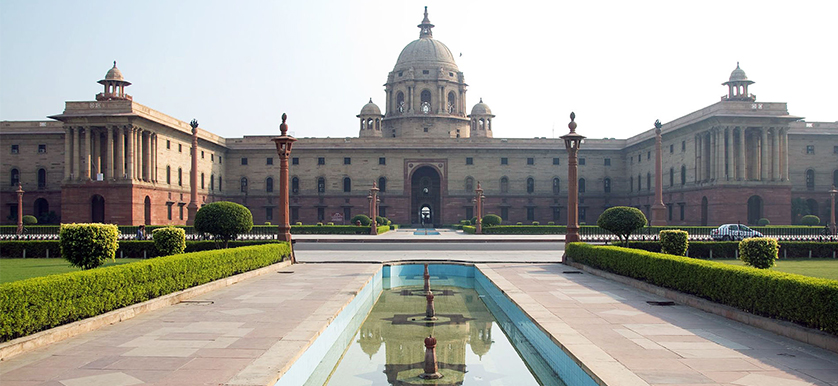Performance Management in the Indian Government
A brief history
Traditionally, the Indian Government used to be described as a rule-based structure, primarily focused on processes. Such an approach was mainly oriented towards input usage, and performance was assessed against money spent on different projects / schemes. The drawback of this modus operandi was that it failed to look at the results achieved by the activities undertaken by the Government.
In the period 1975-1976, a scheme of performance budgeting for the financial year was introduced, to analyze the connection between inputs and outputs. More specifically, it looked at:
- Objectives and projects implemented in the past, current and future period;
- Connections between the five year plans and the achievements to date;
- Financial statements highlighting the outlays for the projects implemented;
- Details on the actions taken and achievements in each of the projects conducted.
To improve the functionality of the above presented scheme, a zero-based budgeting approach was introduced in 1980, as well as an outcome budgeting scheme, some years later. Their main scope was to focus more on the results achieved, rather than on inputs.
In 2009, the Prime Minister approved the Performance Monitoring and Evaluation System (PMES) for Government Departments, meant to assess departments’ performance. The system involves a yearly preparation of a Results Framework Document (RFD), where each department outlines its objectives and the extent to which it managed to achieve them against the targets set. In this way, all important deliverables expected from each department are being monitored, in terms of finance, quantity, quality, short and long term efficiency.
The Performance Management Division, within the Indian Cabinet Secretariat is in charge with the Government Performance Management Systems for Ministries and Departments within the Government of India. Its main functions include: reviewing and adopting global best practices, updating the existing performance management system and delivering citizen-centric results.
Characteristics of the actual Performance Management system
The timeframe for reviewing progress towards achieving objectives is clearly defined, and it consists of 3 steps:
– At the beginning of the fiscal year, by 1st of April, the Results-Framework Document has to be designed;
– After six months, by 1st of October, progress is monitored against targets, in order to reset goals, adjust priorities and take the actions needed;
– At the end of the year, by 31st of March, the overall performance is evaluated against agreed targets.
At the moment, 80 out of 84 ministries / departments and their Responsibility Centers are covered by the RFD policy. Below, there is an example of how a Performance Evaluation at the end of the year is conducted within the Department of Administrative Reforms and Public Grievances.
Such a rigorous approach to setting objectives, KPIs and targets supports each Ministry’s endeavors to performance. When it comes to setting objectives, it is important to note that they are assigned a certain weight, taking into consideration their priority. Moreover, for each of them, departments have to list the policies, programs, schemes and projects they need to undertake, in order to make objectives real. To measure the performance achieved for each objective, success indicators, or Key Performance Indicators (KPIs) are set, each of them again, with a certain weight attached. Targets are defined on a five-point scale, ranging from poor (60% achievement of the target), to excellent (100% achievement of the target).
Linking the Performance Management system to incentive scheme
As a consequence of deploying a Performance Management system at Governmental level, an incentive scheme is also about to be implemented for Governmental employees. The level of the incentive is calculated based on an established formula, taking into consideration the following aspects:
- The maximum amount of incentive payment can be 15% of the Budget savings, and it will be offered only if the department achieves a composite score of 100% (Excellent);
- No incentive is paid if the composite score is 70% or less.
An example of how an incentive payment looks like for the Head of the Department can be analyzed below:
Incentives’ distribution between the Head of the Department, the Head of the Division and any other employees. For example, at divisional level, incentives depend 30% on the Departmental performance and 70% on the Divisional performance. In what concerns the bonus allocated to other employees, each division is free to adopt a different reward scheme, which has to be approved by the Secretary at the beginning of the year. Also, the maximum level of the incentive cannot exceed a certain percentage of the basic salary. It is important to note that each reward is not only linked to the individual performance, but also to the performance achieved at departmental / divisional level. In this way, negative consequences related to targets and rewards are avoided, as individuals are not only monitored against their own performance, but also against the team performance.
It is important to note the great progress the Indian Government has made in the recent years in terms of managing its strategic objectives and taking actions to ensure their achievement. The current Performance Management framework is prone to further changes and improvements, and by the time all 84 Ministries will have implemented the RFD scheme, the overall performance achieved at Governmental level will be better consolidated.
References:
- Performance Management Division, Cabinet Secretariat (2014), Functions
- Cabinet Secretariat, Government of India (2014), Performance monitoring and evaluation system for Government departments
- Performance Management Division, Cabinet Secretariat (n.d.), Proposed guidelines for Performance-Related Incentive Scheme (PRIS)
- Performance Management Division, Cabinet Secretariat (n.d.), Performance Management System
Image source:
- Department of Administrative Reforms and Public Grievances (2013), Results-Framework Document (RFD)
- Performance Management Division, Cabinet Secretariat (n.d.), Proposed guidelines for Performance-Related Incentive Scheme (PRIS)

Tags: Government - State / Federal performance, Government performance, Performance in India, Performance Management








